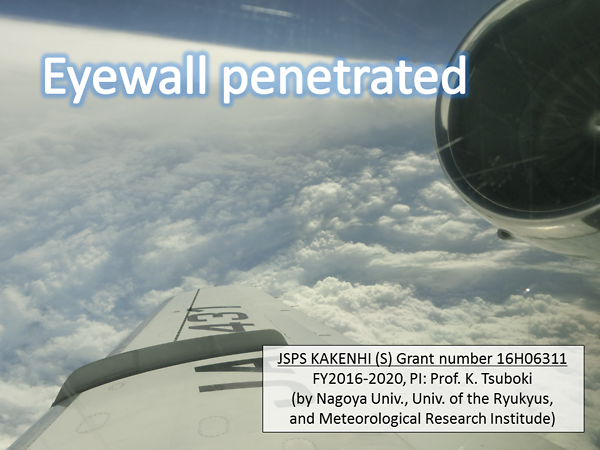Seminar "Double Warm-Core Structure of Typhoon Lan (2017) as observed through upper-tropospheric aircraft reconnaissance during T-PARCII" by Prof.Hiroyuki Yamada

Date
Location
Description
[Speaker]
Prof. Hiroyuki Yamada
Department of Physics and Earth Sciences,
University of the Ryukyus
[Abstract]
A jet airplane (Gulfstream-II) with two newly-developed GPS dropsonde receivers was used to examine the inner core of Typhoon Lan (2017), as part of the Tropical Cyclones-Pacific Asian Research Campaign for the Improvement of Intensity Estimations/Forecasts (T-PARCII). During the first flight with several eye soundings in 0500-0700 UTC on 21 October, this typhoon was in its mature stage with a central pressure of 915 hPa. Satellite imagery showed the annular structure of this typhoon, with roughly 90-km diameter of the eye and surrounding axisymmetric eyewall convection. The flight route was initially designed to go around the eyewall convection, but was modified to go into the eye. This decision was made in flight using a weather avoidance radar. The airplane flew at 43,000 feet (~13.7 km) of altitude, and totally 9 and 12 dropsondes were deployed in the eye-eywall and surrounding regions, respectively. The deployment from this altitude enabled us to examine thermodynamic features of the eye in the lower and middle troposphere and marginally in the upper troposphere. Vertical profile of the eye soundings showed the warm core structure extending from the lower through upper troposphere, with two peaks near 3 km (~ 700 hPa) and above 12 km MSL (< 200 hPa). Potential temperature anomaly was estimated using a local reference sounding obtained at 0600UTC at the JMA Minamidaito site, which was at 400-km north of the eye. The estimated anomalies were approximately +12 K on average and +16 K at both the lower and upper peaks. The height and strength of the upper peak was basically consistent with those reported in the previous observational studies. In contrast, the height of lower peak was about 2 km lower than that reported in many of the previous studies.
Subscribe to the OIST Calendar: Right-click to download, then open in your calendar application.



